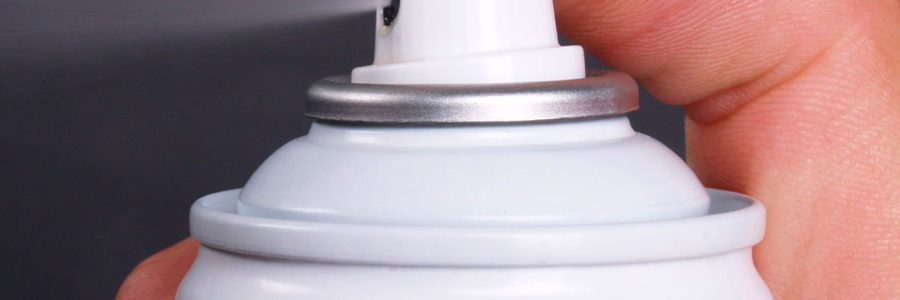Top 10 Toxins: Many of us did not grow up with a deep education surrounding health and wellbeing. Between the beliefs passed down intergenerationally and the chronic bombardment on our psyches by marketing companies—most forage their relationship to their body and their health for the first time in adulthood. So for many, this quest is born out of a desire to heal from a formal diagnosis or even just a set of symptoms and a deep knowing that life can and should feel better than this.
![]()
This article has been medically reviewed by Dr. Charles Penick, MD![]()
Although detox is a natural process the body undergoes daily, the reality is that for many of us, the burden of toxicity has been an overload for our bodies for years, if not decades. When you think about the environments in which we grew up and lived, it is not surprising that many people are struggling with their health.
Since World War Two, 80,000 new chemicals have been created, with 1,500 new chemicals being invented each year. Testing is insufficient at best: 10 will be tested for their neurotoxic effect, and NONE will be tested to see how they react with other chemicals (synergistic effect).
Because most cleaning chemicals are protected by trade secrets, many companies are not required to disclose all ingredients. Instead, they include proven carcinogenic ingredients (cancer-causing) with neurotoxic (brain disruptive) effects, with no ramifications.
On top of it all, we live in one of the most health-valued eras, so companies go above and beyond to trick us into thinking their products are healthy, using greenwashing tactics like ambiguous language (including words like “natural” and “eco”), as well as eco-looking packaging.
This article aims to highlight the upstream pollution making its way into our bodies. It doesn’t matter how much you detox; if you’re still chronically exposing your body to toxins, it will be a never-ending two steps forward, two steps back.
#1 – Household Cleaners:
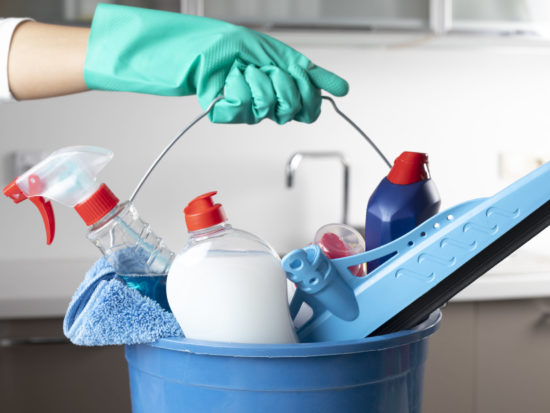
Household cleaners often contain neurotoxic, cancer-causing ingredients 1. Many of the surfaces we spray come into direct contact with our hands and food, which offers these chemicals a direct vehicle to enter our bodies. When you spray cleaners on your counter, you inhale these volatile organic compound fumes that go right into your airways.
Solution: Natural options like Seventh Generation Spray cleaner.
Furniture polish contains many toxic chemicals (see list below) that remain on your furniture. Anytime you or your family touch the surfaces, these oils make their way into your bloodstream.
Solution: Purchase non-toxic polish or make your own natural furniture polish as follows:
- 1 cup olive oil
- 1/2 cup fresh squeezed lemon juice
- Optional: a few drops of your favorite essential oil
- Simply shake ingredients in a glass jar and apply with a soft cloth to naturally clean and polish hardwood furniture
Toilet Bowl Cleaners are one of the worst offenders in terms of off-gassing. The intense smells linger dramatically for hours in your bathroom as your children breathe in. Unfortunately, because they are unseen does not mean the fumes are harmless!
Solution: Try Ecover brand cleaner.
Dishwashing Detergent can be very toxic. Toxic chemicals in the soap combine with chlorine, fluoride, and other chemicals in our city water, forming a toxic gas 2. When we open the dishwasher, we are then showered with those chemicals as vapors, and a film of these toxins is left on your plates, bowls, cups, and cutlery which then comes into contact with the food you eat.
Solution: switch to an all-natural, safe detergent like one from Seventh Generation.
Fabric Softener is estimated to have six neurotoxins, which are considered endocrine disrupters (known for their ability to alter hormones) 3. Also, they can cause weight loss resistance; the state wherein one cannot lose weight regardless of diet and exercise. When patients have thrown out their commercial fabric softener, their migraines disappear, and they are finally able to drop stubborn pounds.
Solution: Use wool dryer balls that are chemical-free, soften fabric, and decrease drying time up to 25%. My pets love them!
Laundry detergents contain carcinogens that have easy access to your pores and bloodstream when they linger on your clothes after the wash. Scented laundry products emit hazardous chemicals through dryer vents, especially with scented varieties, which expose your lungs to toxic VOCs 4.
Solution: Try Seventh Generation or Life Tree laundry detergents
The following list gives you an idea of some of the toxins contained in these household cleaners:
- Formaldehyde – Found in furniture polishers, car cleaners, disinfectants, rug, and upholstery cleaners, and toilet bowl cleaners.
- Ethylbenzene – Found in bathroom tub and tile cleaners, floor and furniture polish, laundry starch preparations, and rug upholstery cleaners.
- Petroleum Distillates (Petrochemicals) – Found in furniture polish and cleaners, lubricating oils, pet flea, and tick products and collars, petroleum products, floor and furniture polish, dishwasher cleaners, aerosol sprays, and laundry detergents.
- Chlorine – Found in dishwashing detergent, laundry detergent, kitchen, and all-purpose cleaners. Note: Any substances containing chlorine, when mixed with ammonia, toilet bowl cleaners, or vinegar, will produce deadly toxic fumes (chloramines or chlorine gas).
- Benzene – Used as optical brighteners (in surface cleaners, laundry and dishwashing detergents, surface polishers) and found in general performance sealants (PVAC, butyl, vinyl, etc.), laundry starch preparations, lubricating oils, scatter rugs, bath mats, and bath sets.
- Butyl Cellosolve – Found in window cleaners and other all-purpose cleaning products.
- Phenol – Found in disinfectants, antibacterial, antiseptics, hard surface cleaners, paint and varnish removers, and synthetic resin and rubber adhesives.
#2: Furniture, Carpet, and Appliances:

Furniture: Most furniture is made with materials known to cause respiratory problems, breast cancer, and even leukemia over extended periods of time 5. Even furniture made of pressed laminated wood (which is used to make both inexpensive and expensive furniture) contains formaldehyde, which is extremely poisonous and makes its way into your airways. Also, beware of furniture pads containing polyurethane and different petrochemicals continually off-gas.
Solution: Opt for solid wood furniture with non-toxic glue, natural cushions (made of down and wool), and natural fabrics (cotton, hemp, linen). If you’re going to get synthetics, buy used: the older the furniture, the more time it has had to go off-gas.
New cabinets can be extremely toxic as they off-gas VOCs (volatile organic compounds) that negatively affect indoor air quality.
Solution: Check out innovative companies such as greenbuildingsupplies.com, which sell safe sealants that contain off-gassing and provide carbon inlays that will pull out these harmful odors.
Mattresses and Pillows: The last thing you want to do is sleep on a mattress and pillow that is off-gassing chemicals while you sleep. Unfortunately, today, most mattresses are made using petroleum-based chemicals, foams, plastics, and flame-retardants linked to illness 6.
Flame retardants are compounds added to manufactured materials, such as plastics, textiles, surface finishes, and coatings that stop or delay the production of flames to prevent the spread of fire. Studies show that flame-retardants are present in the body of almost everyone in the U.S. and are known to cause hormonal and neurological damage 7.
Solution: Get 100% wool (antibacterial), organic cotton, or real rubber pillows, and consider natural pillows.
Carpets: Some of the major chemicals released from new carpets and furniture are formaldehyde (and off-gassing levels still high after the 2nd year), benzene, toluene, and xylene. The carpet fibers themselves, the rubber backing, the glues, dyes, fungicides, and stain-resistant treatments all off-gas these chemicals for up to five years after installation 8. And be careful with old carpets as they can be filled with mold spores.
Solution: Solid hardwood floors, bamboo floors, cork flooring, and wool carpet. Get more healthy flooring ideas here.
Dry Cleaning chemicals cause neurodegenerative diseases such as Parkinson’s disease. Most dry-cleaning shops in the U.S. use perchloroethylene as their primary solvent, a toxic chemical with human and environmental health concerns 9.
Solution: There are many natural dry-cleaning shops available today. Always leave your dry-cleaning unwrapped in the garage or outdoors until the smell dissipates to be safe.
Electronic devices and appliances are sprayed with brominated flame retardants (BFRs) that compete with iodine (needed to make thyroid hormones) and can cause thyroid problems,
Solution: If you buy new electronics or appliances, allow off-gas outside on a sunny day (be careful to watch for weather changes). The heat will dissipate the smell, but it might take some time, so be patient.
#3: Water
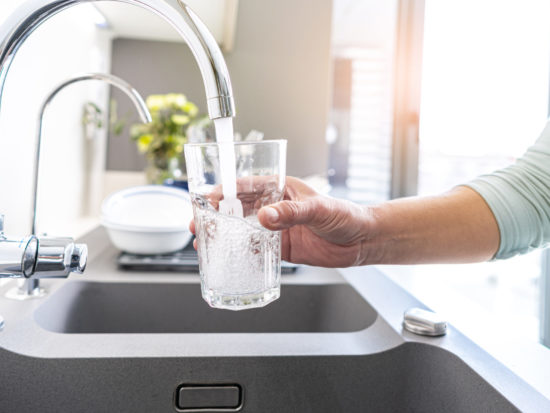
City water is full of fluoride, chlorine, medications, hormones, antibiotics, birth control, and psychotropic drugs (they alter our serotonin levels), and fish are transforming from female to male because of the presence of these hormone-disrupting chemicals 10.
Solution: One of the most powerful filtrations systems is a reverse osmosis water filtration system. Save up for a whole house filtration system because the toxic chemicals, including chlorine, become vaporized in a hot shower, enter your lungs, and are also absorbed through the pores of your skin.
#4: Air Quality:

Modern homes are so efficiently sealed that chemicals are getting trapped because the materials don’t breathe. A good air filter may be necessary to remove pollen and dust, and an ERV (energy return ventilator) brings in the fresh air and lets out stale air.
Air conditioning units can be challenging because condensation builds up, and mold forms easily in the ducts when they are shut off. Then, when the unit is turned on again, mold spores are blown throughout your home.
Solution: Open up your windows to ventilate, choose products with low VOCs, freshen the air by diffusing natural essential oils, and run a fan all the time, especially in the summer months.
#5: Mold:
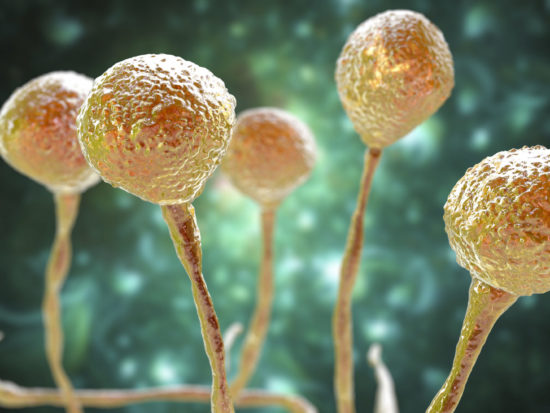
Mold exposure wreaks absolute havoc on the human body. Biotoxins from mold affect leptin receptors, which regulate hunger and tell the body to burn fat for energy 11. When disrupted, it can cause weight loss resistance, hormone dysregulation, and even cause unexplained pain. In addition, conditions such as chronic fatigue syndrome, insomnia, and other unexplainable illnesses can be linked to mold exposure.
Toxic molds are often not visible and can hide behind walls, floorboards, or appliances. One of the most common causes of mold is a water leak, which often isn’t noticed because it happens behind your house’s infrastructure. Controlling humidity is also essential to keep mold from growing.
Some people have a more difficult time getting rid of these biotoxins. In addition, these biotoxins can get trapped deep in your tissues and can turn on bad genes that may lead to disease 12.
ERVs (as noted above) help dilute toxins and help control humidity by bringing in fresh air, which greatly impacts moisture. Homes built today are airtight, which increases toxins in the air and humidity. Air exchange is key for a safe, low-toxin home.
Solution: If mold is an issue, proper and safe remediation must occur. Once toxic mold has been removed, we have a safe and effective detoxification system called the IDS system, which contains GCEL (draws biotoxins like mold from the cells) and BIND (binds to chemicals and biotoxins accumulated in the bile that have been dumped in the gut). To enhance and accelerate detox, add CytoDetox™ drops, which cross into the cell and grab toxins and heavy metals, bringing them into the gut where BIND can remove them from the body.
#6: Food:
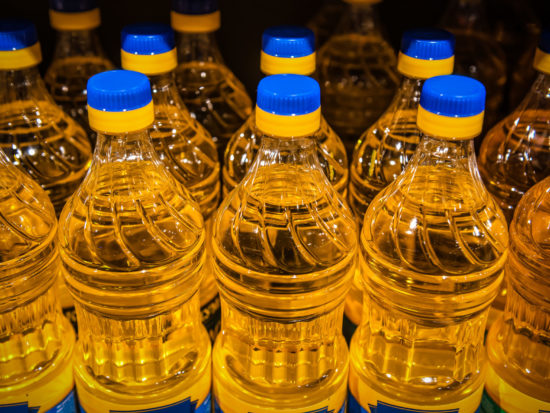
We all know how toxic foods included in the Standard American Diet can be. But, we now need to talk about glyphosate. This herbicide creates holes in our gut and affects the shikimate pathway, where we make a lot of brain chemicals like serotonin and dopamine. Glyphosate is also linked to autoimmune conditions, food allergies, sensitivities, dementia, autism, diabetes, heart disease (disrupts cholesterol sulfate), and uncontrolled weight gain.
Solution: Avoid all conventional grains, and choose organic produce and grass-fed, pastured animal products whenever possible.
Toxic Fats: Vegetable oils are toxic fats that drive cellular inflammation 13. The most commonly used vegetable oils are canola, cottonseed, soybean, sunflower, and safflower. Even healthy saturated fats can become inflammatory when cows, for example, eat genetically modified grains (instead of their natural diet of grass). Add antibiotics, steroid hormones, and other drugs found in conventionally raised meat, which is a recipe for disaster.
Solution:
- High Heat: Use only animal fats (tallow, ghee, bacon fat), coconut butter, coconut oil, and avocado oil.
- Medium Heat: Use olive oil. It will turn rancid when heated above 120° F. If it smokes, it has already turned rancid. Butter is also a good option, but it has become rancid if it starts to brown.
- Baking: Butter, coconut butter, and olive oil can be used in baking if the temperature is less than 325°. Use butter, coconut oil, avocado oil, or coconut butter in a hotter oven.
- No Heat Oils: Cold-pressed oils, olive oil, flax oil, sunflower oil, safflower oil, hemp seed oil, almond oil, and walnut oil. These oils have fragile fatty acid bonds and should be used raw on salads, other cool foods, or smoothies.
Cookware: A Teflon pan heated at a regular cooking temperature releases at least six toxic gases, including two carcinogens, two global pollutants, and MFA, a chemical lethal to humans at low doses 14.
Aluminum pans hold a similar problem. It’s no secret that aluminum cookware is linked to neurological conditions such as Alzheimer’s and Parkinson’s disease, osteoporosis, extreme nervousness, anemia, headache, decreased liver and kidney function, forgetfulness, speech disturbances, and memory loss.
Solution: Use cookware that is environmentally friendly and non-toxic.
#7: Amalgam Fillings:
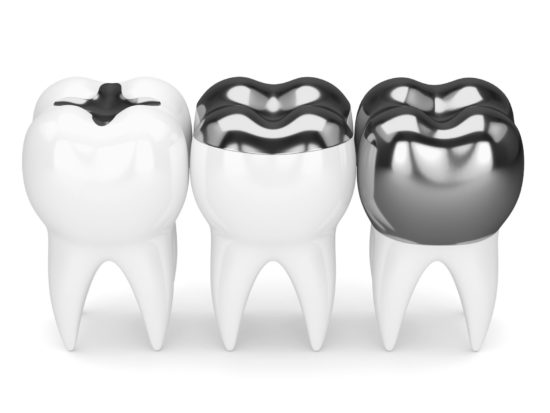
The World Health Organization says amalgam fillings are not meant to be put into human beings, and most other countries, except the US, have banned them. Before an amalgam filling goes into your mouth, it is handled as hazardous waste with guidelines from OSHA. But when it goes into your mouth, is it considered SAFE? And then the moment it comes out, it is again regarded as hazardous waste. Unbelievable.
Every year there is an outcry before Congress trying to ban these fillings because they are indeed hazardous waste. But the AMA (American Dental Association) somehow manages to push it through. In addition, we must consider amalgams are more dangerous in our mouths because of the acidic environment. Also, we are brushing our teeth and drinking a hot liquid that makes the mercury vaporize even more.
Solution: Don’t run to get mercury fillings taken out by a conventional dentist. There is a specific and safe way to do it, and most conventional dentists are not trained to do it properly. To locate a biological dentist in your area, you can visit the IAOMT website.
#8: Plastics:
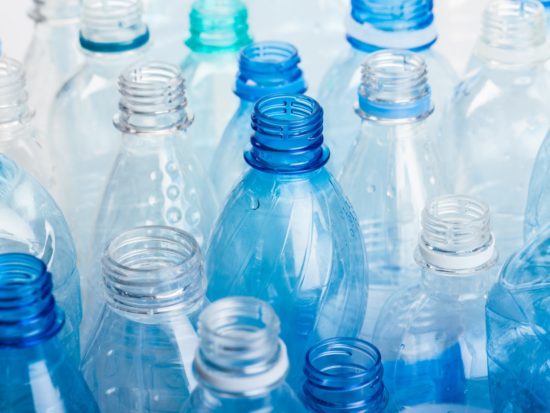
Empty Water Bottles
Living in a modern world means almost no way to escape a degree of exposure to plastics 15. The main problem with plastics is disrupting the hormone system (they are endocrine disrupters). For example, a Duke University study gave groups of mice BPA (a plastic chemical), which turned on the agouti (fat) gene that made them obese, with other health challenges. Likewise, phthalates (another chemical in plastic) get into our bodies, driving hormone problems.
Solution: Extreme temperatures (hot or cold) denature plastic and cause the particles to break down and penetrate your food or beverage. Avoid putting hot or cold food or beverages in plastics. This includes putting plastic in the microwave.
Be mindful of how plastic sneaks into packaging products, like the BPA lining of canned foods. The acidity of certain food pulls the BPA, phthalates, and other plastic chemicals right into the canned food source. Choose BPA-free canned foods whenever possible, but be mindful in general that most canned foods are made with toxic liners.
You also want to avoid styrofoam, which contains styrene, a cancer-causing chemical 16. For example, if you drink lemonade out of a Styrofoam cup, the acidity from the lemons will leach this chemical easily into the drink. And if you drink hot coffee out of a Styrofoam cup, you will essentially be drinking a cup of styrene.
Other ideas:
- Use glass for most of your storage. Don’t place hot foods in plastic containers or bags to stop the effects of plastic leaching into your food. Let the food cool completely before storing it in plastic, but ideally, just use glass. Also, prolonged refrigeration storage in plastic isn’t a good idea because the cold will also promote breaking down the plastic. Instead, you’re better off leaving food on a glass plate or bowl and using plastic wrap over it to minimize contact (preferably so that the plastic isn’t touching the food).
- Store food in mason jars. If you don’t want to purchase these, just clean out emptied glass jars and reuse them for storage. Reduce, reuse, recycle!
- Drink filtered water instead of bottled water. It would be better than tap water when away from home. Avoid plastics with numbers 3, 6, and 7. BPA-free does not mean that it is safe!
- Stainless steel and glass bottles are the best two alternatives for your water. To save money easily, you can buy a glass bottle of iced tea (or any other beverage in a glass bottle) and reuse the bottle for water once emptied.
#9: Toxic Beauty Products:
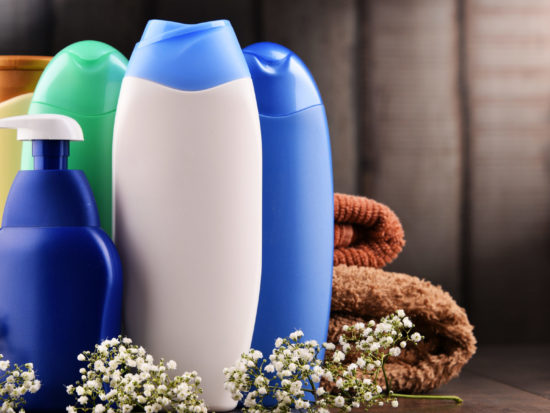
One of the highest exposures to BPA is toxic beauty products 17. For example, certain red-colored lipsticks contain high amounts of lead (lead is added for a smooth texture) 18. And it is estimated that women eat 32 tubes of lipstick per year! With foundation or eyeliner that contains BPA, those tissues around the eye are highly absorbent and, therefore, extra vulnerable.
There are approximately 518 chemicals in makeup, body products, deodorant, hair care, etc., that many people use in the morning, and about 125 ingredients are suspected of carcinogenic activities. Out of the 125, here are five in practically every personal care product used today.
- Diethanolamine (DEA) is found in over 600 home and personal care products such as soaps, lotions, cosmetics, bubble baths, laundry, dish-washing detergents, etc. DEA is used to provide a rich lather in shampoos and maintain consistency in lotions and creams
- Propylene Glycol is used in antifreeze solutions and hydraulic fluids as a powerful solvent. It is also found in childhood vaccinations, cosmetics, toothpaste, shampoos, deodorants, lotions, and even processed foods (including pet foods). Propylene glycol helps products retain moisture and helps them stay soft and moist when used on your skin. That’s why it is found in most baby wipes and skin lotions.
- Sodium Lauryl Sulfate (SLS) is perhaps the most common of the three chemicals and by no means any less toxic. SLS is used as a surfactant to break down the surface tension of water. Therefore, it will break up grease and is used in concrete floor cleaners, engine degreasers, and carwash detergents. Unfortunately, the same degreaser is being used in practically every soap, shampoo, and toothpaste on the market today.
- Phthalates are dangerous chemicals found in plastics that cause endocrine disruption and cancer. Phthalates are also found in baby care products. A study testing the urine of 163 infants between two and twenty-five months of age found 80% of the infants had at least 7 phthalate metabolites in their urine. All infants in the study had detectable levels of at least one phthalate metabolite. Almost all of the mothers had used baby wipes, and over half of the mothers had used baby shampoo on their infants within 24 hours of the urine collection.
- Nanotechnology is a newer technology that manipulates materials at the scale of atoms and molecules. To give you an idea of how small a nanometer is, human hair is 80,000 nanometers in diameter. This technology is entirely unregulated, and almost no testing has been done for its health effects.Nanotechnology is of concern because it is now being used in virtually all personal care products, from make-up to toothpaste and perfume. Unless you call the companies that manufacture your personal care products and ask if they use nanotechnology, there is no way of knowing if those products contain nanoparticles. Companies are not required to test nanoparticles or label them.
Solution: There are many non-toxic beauty products that can be purchased from health stores (Gabriel, Rejuva, Afterglow, and many other brands).
#10 EMFs
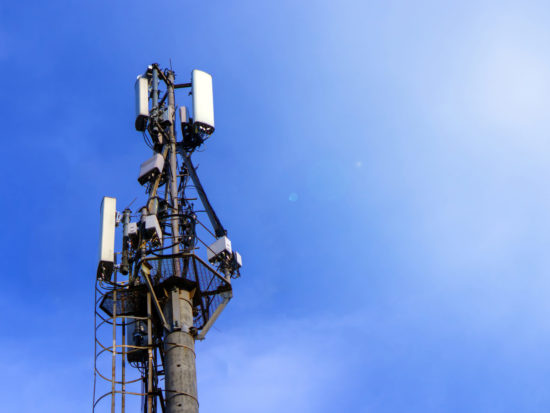
Electric and magnetic fields (EMFs) are invisible areas of energy, often referred to as radiation, that are associated with the use of electrical power and various forms 19. This is a huge missing piece of the puzzle for many people on their health journey because if your toxic bucket is close to being full (or overflowing) and you continually expose yourself with your cell phone and other electronic devices, you are very vulnerable to EMFs that can drive cellular inflammation.
EMFs are also linked to cancer and tumors, which is concerning because they are nearly unavoidable in the modern world 20. They emanate from your TV, computer, iPad, cell phone, hairdryer, fan, oven, and fridge.
Solution: Put your phone on airplane mode and get an EMF-reducing case, turning off WiFi at night, EMF absorbing rocks and crystals. One of the best things to help discharge the electricity from all these devices is to spend tech-free time barefoot in nature.
In Review:
You can’t expect to change all this overnight, but knowledge is power. Slowly remove these things from your life, and you will start to see changes in your health. Detoxing your home and body is a huge step to realizing optimal cellular health.
Detox Products:
Medical Disclaimer: information on this website is not intended to replace a one-on-one relationship with a qualified health care professional and is not intended as medical advice. It is intended to share knowledge and information. This article has been medically reviewed by Dr. Charles Penick, MD, for the accuracy of the information provided, but we encourage you to make your own healthcare decisions based upon your research and in partnership with a qualified healthcare professional.
References
- “Cleaning Supplies and Your Health.” EWG, https://www.ewg.org/guides/cleaners/content/cleaners_and_health/.
- “Selection and Use of Home Cleaning Products: New Mexico State University – Be Bold. Shape the Future.” Selection and Use of Home Cleaning Products | New Mexico State University – BE BOLD. Shape the Future., https://pubs.nmsu.edu/_g/G304/.
- “Don’t Get Slimed: Skip the Fabric Softener.” Environmental Working Group, 26 Apr. 2022, https://www.ewg.org/news-insights/news/dont-get-slimed-skip-fabric-softener.
- Uw. “Scented Laundry Products Emit Hazardous Chemicals through Dryer Vents.” EurekAlert!, https://www.eurekalert.org/news-releases/613533.
- Formaldehyde in Furniture Products. P65 Warnings. (n.d.). Retrieved April 27, 2022, from https://www.p65warnings.ca.gov/fact-sheets/formaldehyde-furniture-products
- Yael Dubowski, Ph.D., associate professor, Israel Institute of Technology; Sarah Evans, Ph.D., M.P.H., assistant professor, environmental medicine and public health, Icahn School of Medicine at Mount Sinai, New York City; Kenneth Spaeth, M.D., chief, occupational and environmental medicine, Northwell Health, Great Neck, N.Y.; July 10, 2019, Environmental Science & Technology
- “Flame Retardants.” National Institute of Environmental Health Sciences, U.S. Department of Health and Human Services, https://www.niehs.nih.gov/health/topics/agents/flame_retardants/index.cfm.
- Eliminating Toxics in Carpet: Lessons for the Future … https://www.researchgate.net/publication/326580071_Eliminating_Toxics_in_Carpet_Lessons_for_the_Future_of_Recycling_An_Optimizing_Recycling_Report_by_the_Healthy_Building_Network.
- “Drycleaning.” Centers for Disease Control and Prevention, Centers for Disease Control and Prevention, 23 Jan. 2012, https://www.cdc.gov/niosh/topics/dryclean/default.html.
- Iwanowicz, L. R., Blazer, V. S., Pinkney, A. E., Guy, C. P., Major, A. M., Munney, K., … & Kubiak, T. J. (2016). Evidence of estrogenic endocrine disruption in smallmouth and largemouth bass inhabiting Northeast US national wildlife refuge waters: A reconnaissance study. Ecotoxicology and environmental safety, 124, 50-59.
- Tarjeft, Zhanna, et al. “Leptin Resistance.” Sprouts Health The Functional Medicine Practice Gilbert Arizona, 6 Sept. 2019, https://sproutshealth.com/leptin-resistance/.
- “What Is Epigenetics?” Centers for Disease Control and Prevention, Centers for Disease Control and Prevention, 3 Aug. 2020, https://www.cdc.gov/genomics/disease/epigenetics.htm.
- Says:, Anicow, et al. “How Industrial Seed Oils Are Making Us Sick.” Chris Kresser, 23 Sept. 2019, https://chriskresser.com/how-industrial-seed-oils-are-making-us-sick/.
- “Canaries in the Kitchen.” Environmental Working Group, https://www.ewg.org/research/canaries-kitchen.
- “Plastic Is Everywhere: In Water, Air and Soil.” Plastic Soup Foundation, 4 May 2020, https://www.plasticsoupfoundation.org/en/plastic-problem/plastic-soup/plastic-is-everywhere/.
- “Does Eating or Drinking out of Polystyrene Food Packaging Cause Cancer?” Cancer Council, https://www.cancer.org.au/iheard/does-eating-or-drinking-out-of-polystyrene-food-packaging-cause-cancer.
- “Personal Care Products Safety Act Would Improve Cosmetics Safety.” Environmental Working Group, https://www.ewg.org/personal-care-products-safety-act-would-improve-cosmetics-safety.
- Center for Food Safety and Applied Nutrition. “Limiting Lead in Lipstick and Other Cosmetics.” U.S. Food and Drug Administration, FDA, https://www.fda.gov/cosmetics/cosmetic-products/limiting-lead-lipstick-and-other-cosmetics#expanalyses.
- “Electric & Magnetic Fields.” National Institute of Environmental Health Sciences, U.S. Department of Health and Human Services, https://www.niehs.nih.gov/health/topics/agents/emf/index.cfm.
- “Electromagnetic Fields and Cancer.” National Cancer Institute, https://www.cancer.gov/about-cancer/causes-prevention/risk/radiation/electromagnetic-fields-fact-sheet.


